
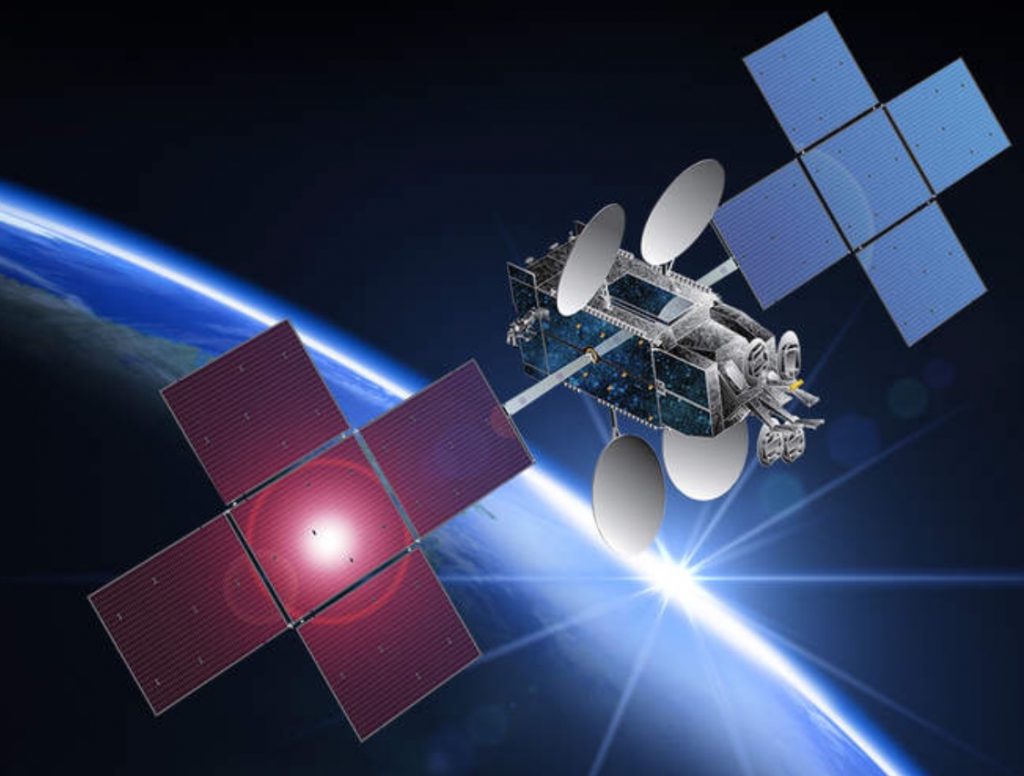
An artist’s concept of EchoStar 19 deployed in space. Credit: Hughes
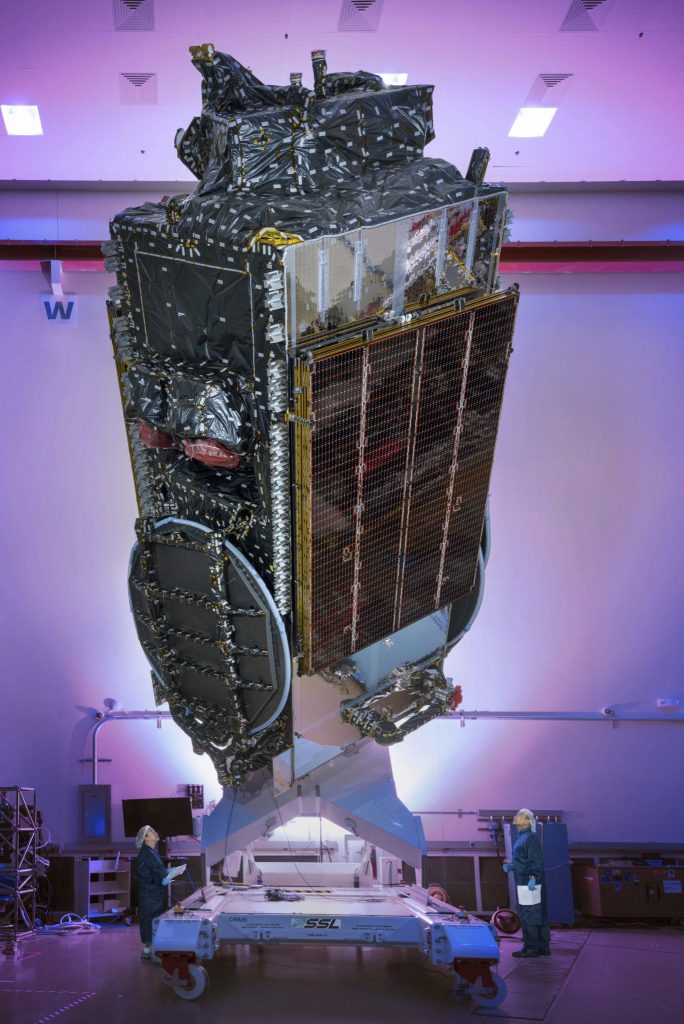
The EchoStar 19 satellite in the factory. Credit: SSL
Mission Overview:http://www.ulalaunch.com/uploads/docs/Mission_Booklets/AV/av_echostarxix_mob.pdf
Rocket/Payload: A United Launch Alliance Atlas V 431 configuration rocket will launch the EchoStar XIX mission for Hughes. The Atlas V is provided by Lockheed Martin Commercial Launch Services.
Date/Site/Launch Time:Sunday, Dec. 18, 2016, from Space Launch Complex (SLC)-41 at Cape Canaveral Air Force Station, Florida. The two-hour launch window opens at 1:27 p.m. EST.
Live Broadcast: Tune in to ULA’s live launch day broadcast at 1:07 p.m. EST.
Mission Description: EchoStar XIX will be the world’s highest capacity broadband satellite in orbit, dramatically increasing capacity for HughesNet® high-speed satellite Internet service to homes and businesses in North America. This large, multi-spot beam Ka-band satellite, based on the powerful SSL 1300 platform, will be stationed at 97.1 degrees West longitude. Building from their experience on the highly successful EchoStar XVII broadband satellite, SSL and Hughes collaboratively engineered thespecific design details of this payload for optimum performance.
Launch Notes: EchoStar XIX will mark the 68th launch of the Atlas V rocket and the third in the 431 configuration. This mission will be ULA’s 12th of 2016 and the 115th since the company was formed 10 years ago.
Latest Update:http://spaceflightnow.com/2016/12/1...peed-internet-across-america-ready-to-launch/
Getting EchoStar 19 aloft begins with a ride to super-synchronous transfer orbit atop the United Launch Alliance rocket, departing from Cape Canaveral at 1:27 p.m. EST (1827 GMT). The daily launch window extends for exactly two hours.
EchoStar 19 will used by HughesNet to provide its space-to-home Internet service across North America, enabling the expansion of capacity over the existing network and growth in the number of consumers able to be served.
Live journal by Spaceflightnow.com: http://spaceflightnow.com/2016/12/16/av071_journal/
Live broadcast:http://www.ulalaunch.com/webcast.aspx
Videos:
Mission Profile:http://spaceflightnow.com/2016/12/16/timeline-atlas-5echostar-19-ascent/
T+00:01.1 Liftoff
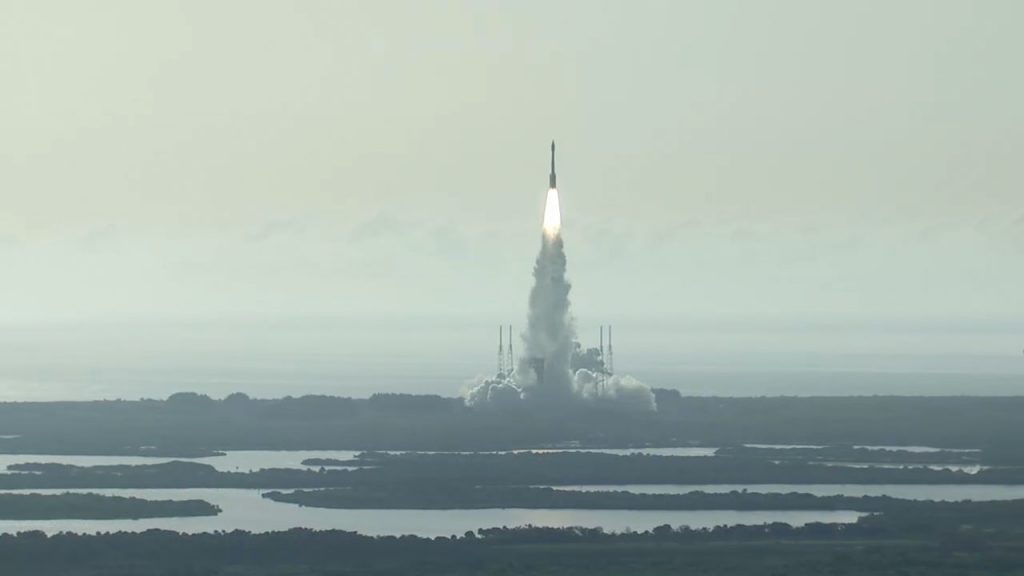
With the RD-180 main engine running, the three strap-on solid rocket boosters are lit as the Atlas 5 vehicle lifts off and begins a vertical rise away from Complex 41 at Cape Canaveral Air Force Station, Florida.
T+00:57.7: Max Q
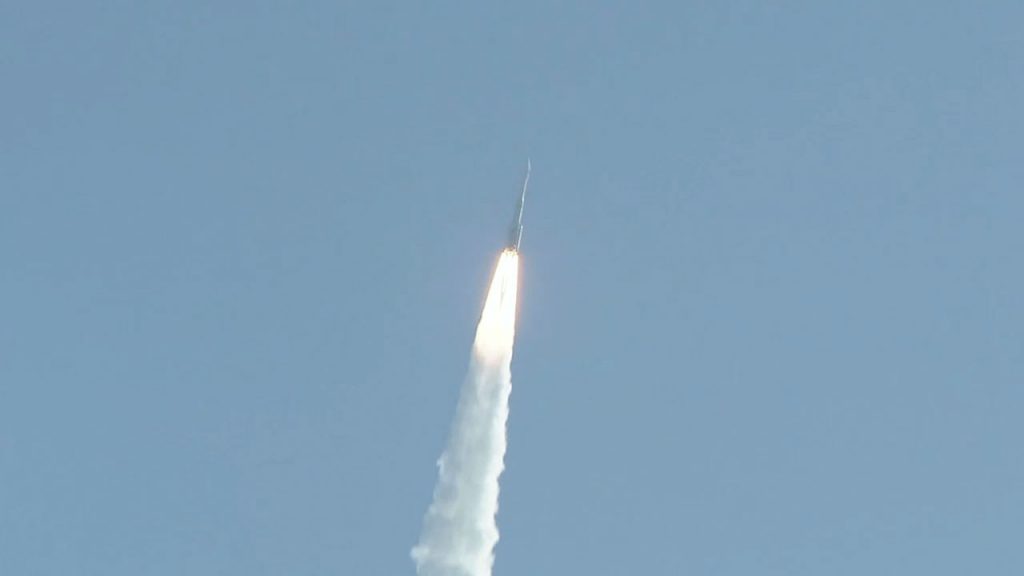
The Atlas rocket, after breaking the sound barrier at 45 seconds, passes through the region of maximum dynamic pressure during ascent through the lower atmosphere.
T+02:05.1 Jettison SRBs
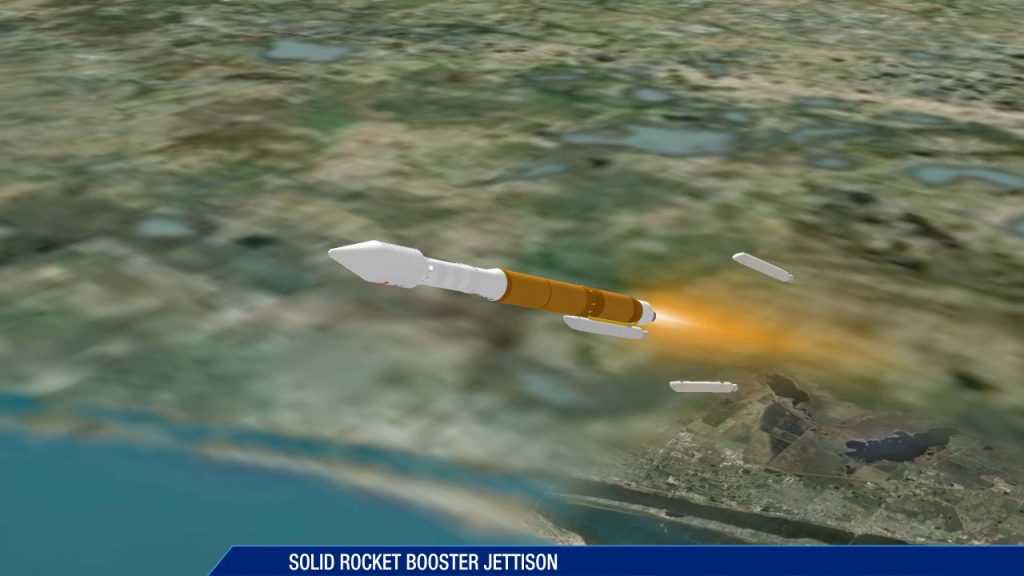
Having burned out of propellant approximately 30 seconds earlier, the spent solid rocket boosters are jettisoned to fall into the Atlantic Ocean. The separation event is staggered with two motors releasing first, then the other a moment later.
T+04:26.7 Main Engine Cutoff
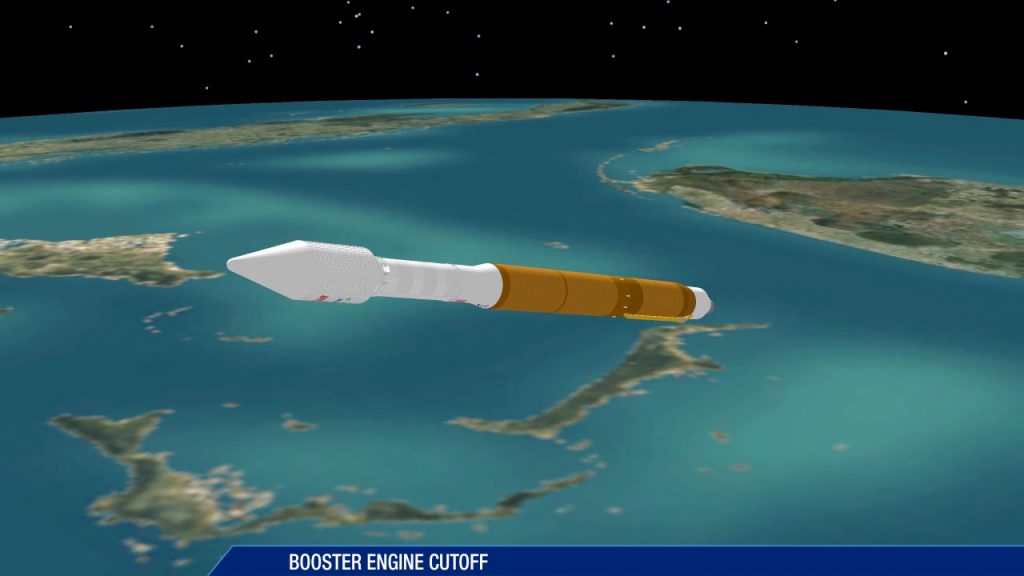
The RD-180 main engine completes its firing after consuming its kerosene and liquid oxygen fuel supply in the Atlas first stage.
T+04:32.7 Stage Separation

The Common Core Booster first stage of the Atlas 5 rocket separates from the Centaur upper stage. Over the next few seconds, the Centaur engine liquid hydrogen and liquid oxygen systems are readied for ignition.
T+04:42.7 Centaur Ignition 1
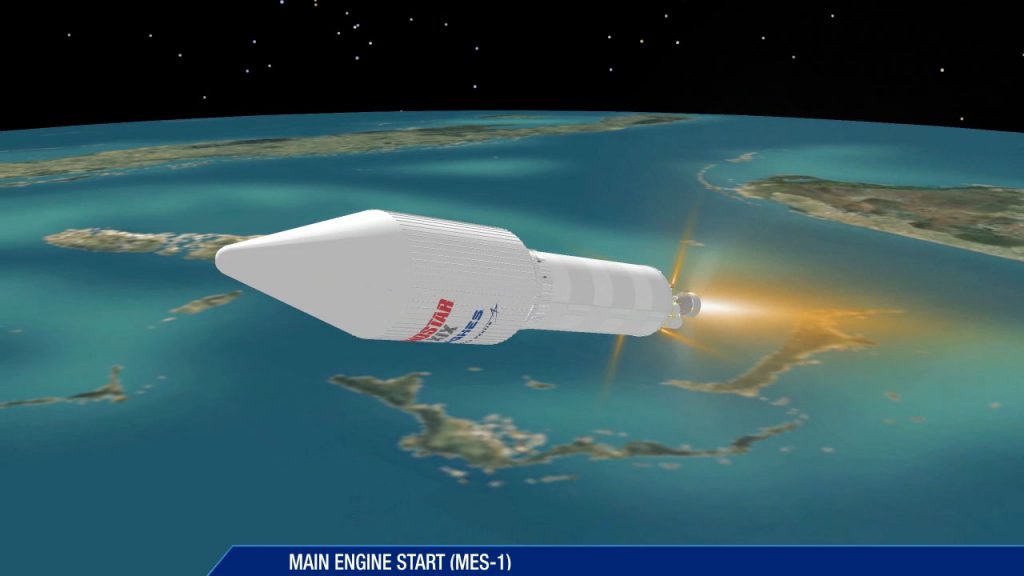
The Centaur RL10C-1 engine ignites for the first of two upper stage firings. This burn will inject the Centaur stage and EchoStar 19 spacecraft into an initial parking orbit.
T+04:50.7 Nose Cone Jettison
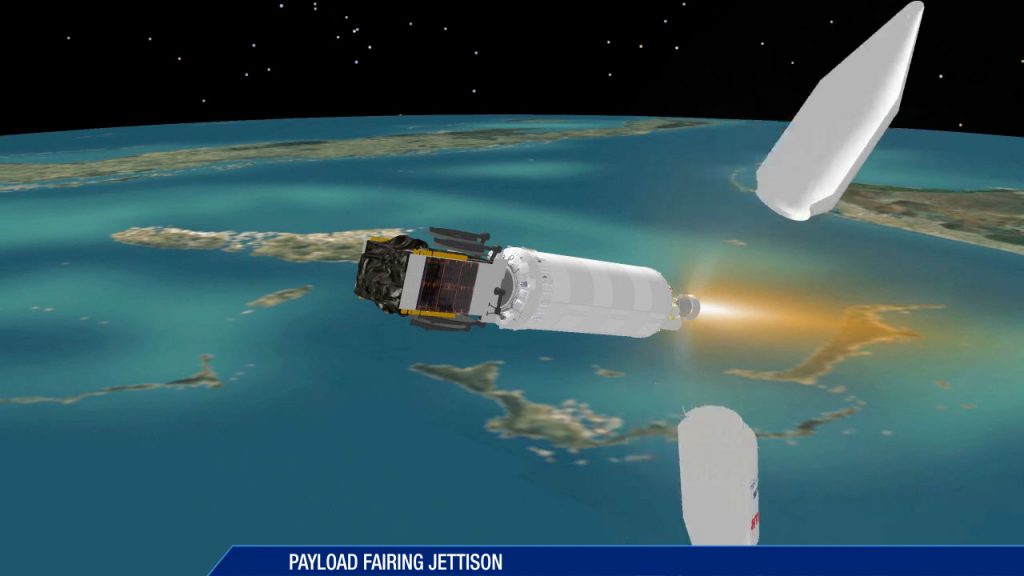
The payload fairing that protected the EchoStar 19 spacecraft during launch is separated after passage through the atmosphere.
T+13:38.6 Centaur Cutoff 1
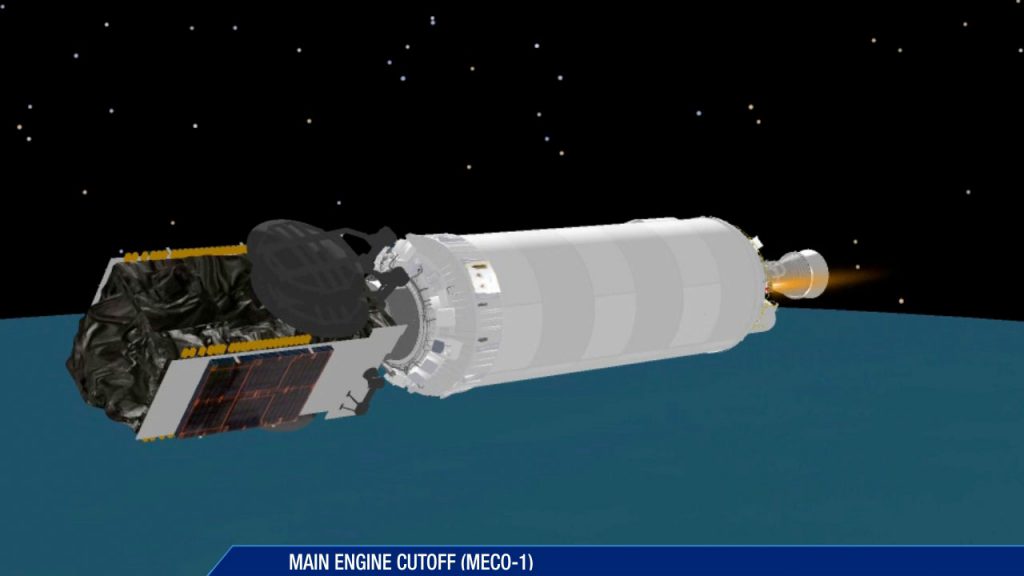
The Centaur engine shuts down after arriving in a planned low-Earth parking orbit. The vehicle enters a 10-minute coast period before arriving at the required location in space for the second burn.
T+23:09.2 Centaur Ignition 2
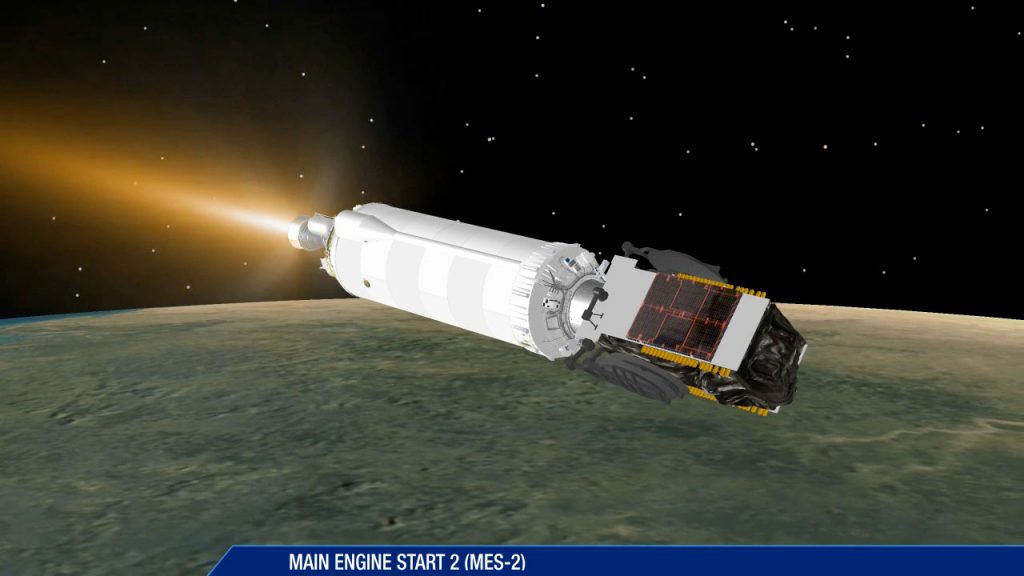
A final push by Centaur is ignited to raise the orbit’s low point and reduce orbital inclination for the EchoStar 19 spacecraft.
T+28:57.6 Centaur Cutoff 2
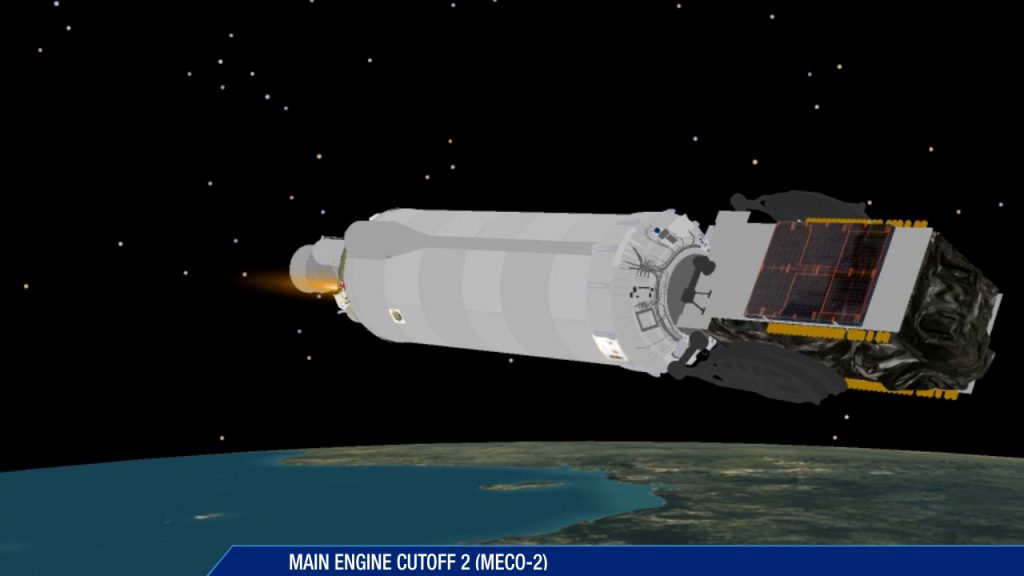
The powered phase of flight is concluded as the Centaur reaches the planned super-synchronous transfer orbit of 127 by 40,389 statute miles at an inclination of 25.44 degrees.
T+32:03.7 Spacecraft Separation
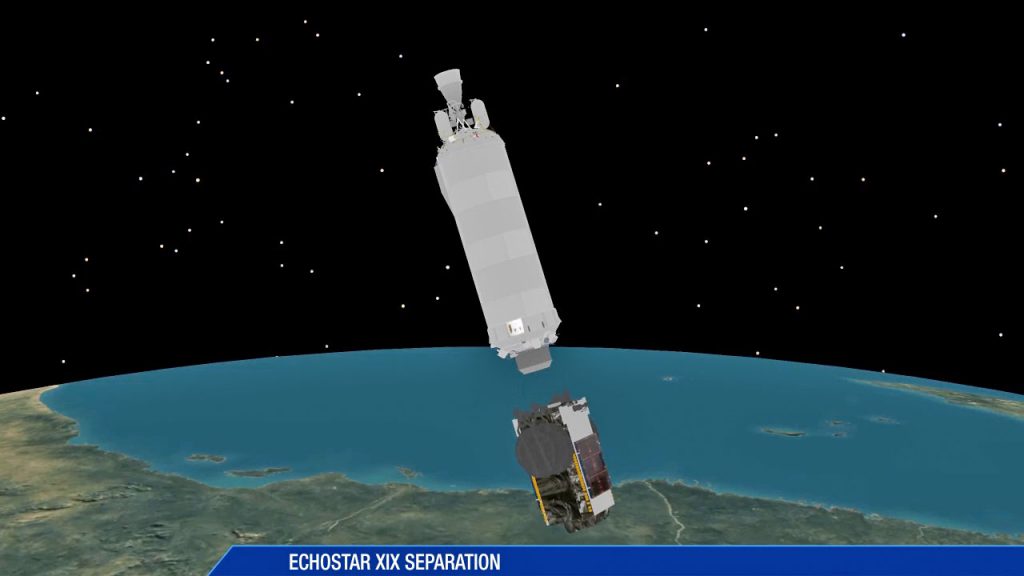
The EchoStar 19 satellite to provide high-speed Internet connectivity to rural America is released into orbit from the Centaur upper stage to complete the launch.
Gallery:
Payload Encapsulation
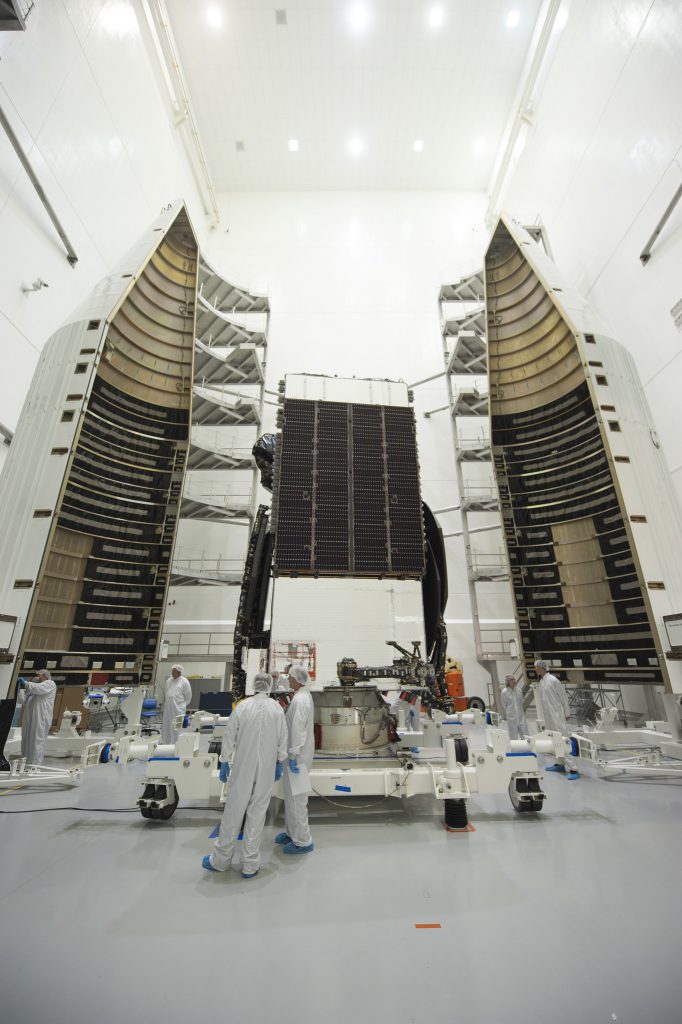
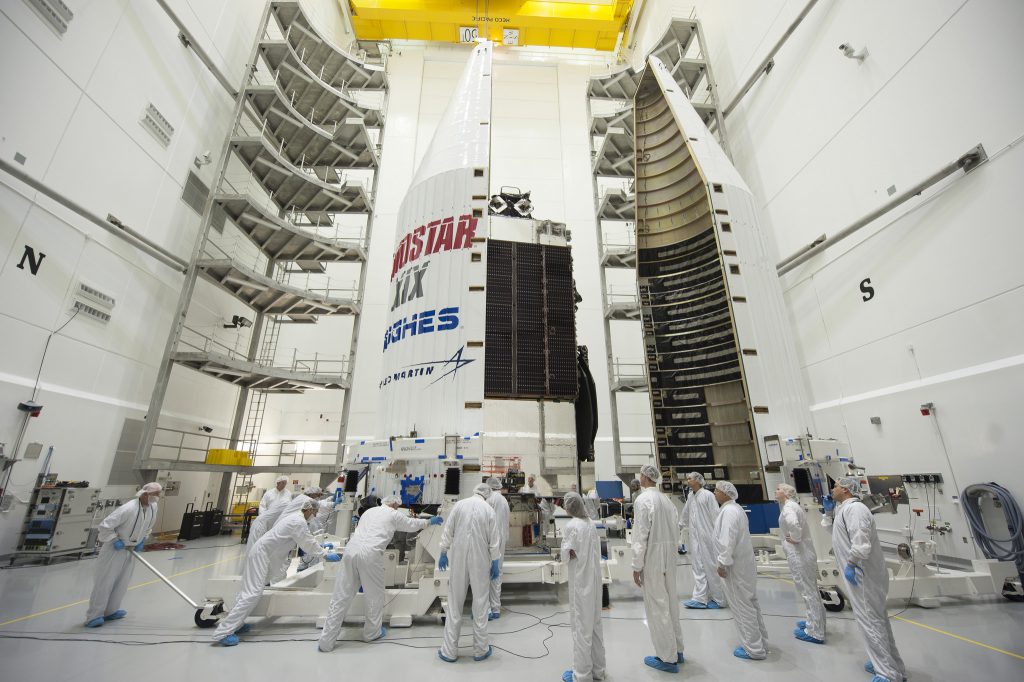
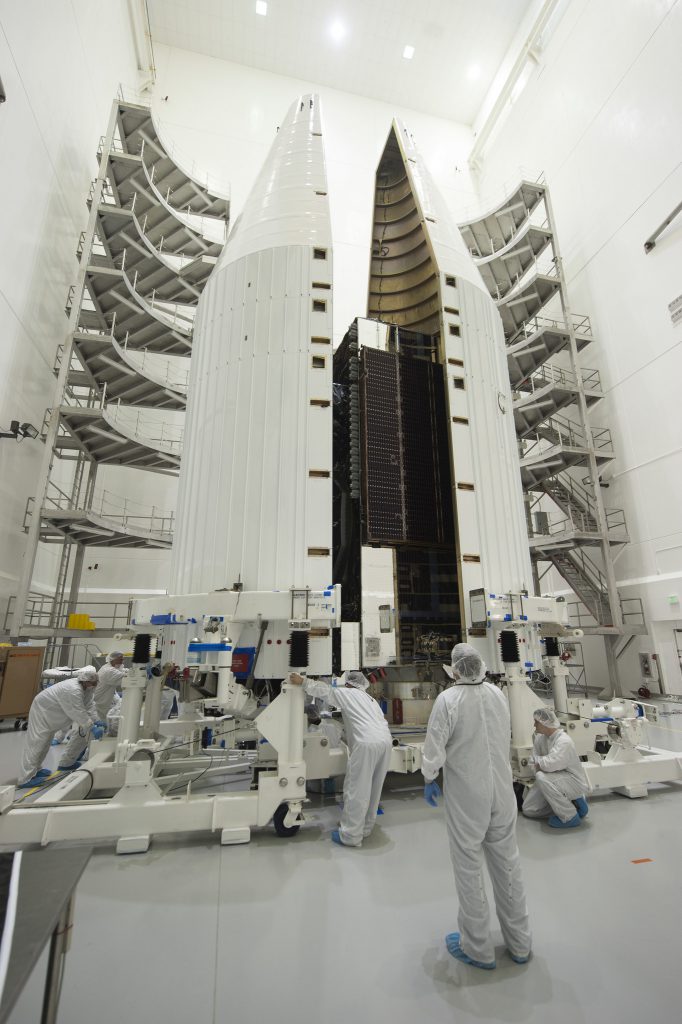
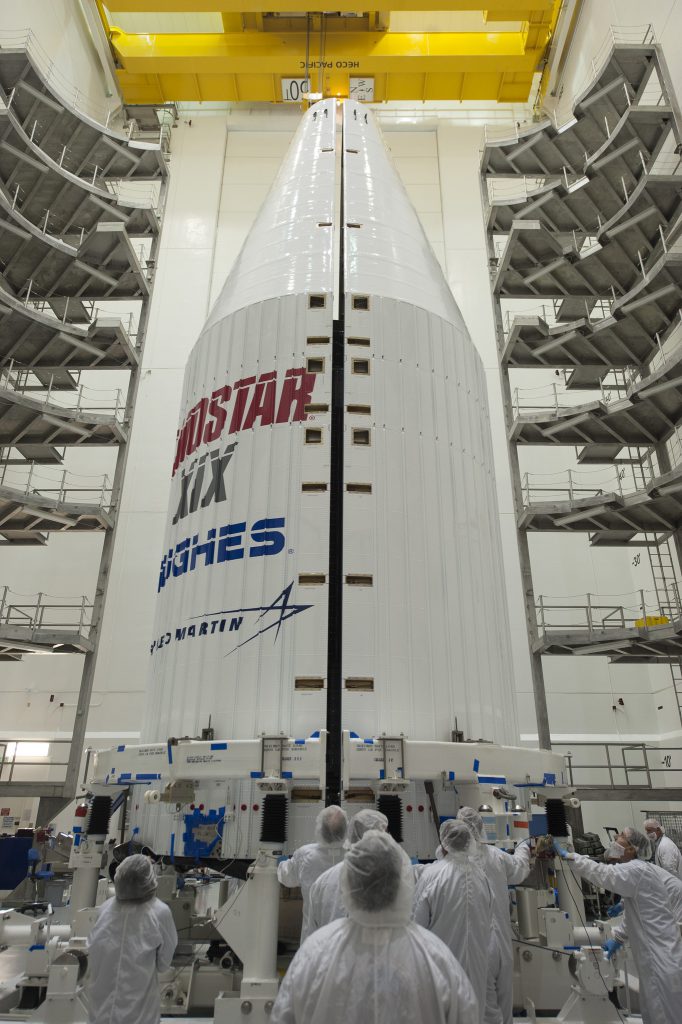
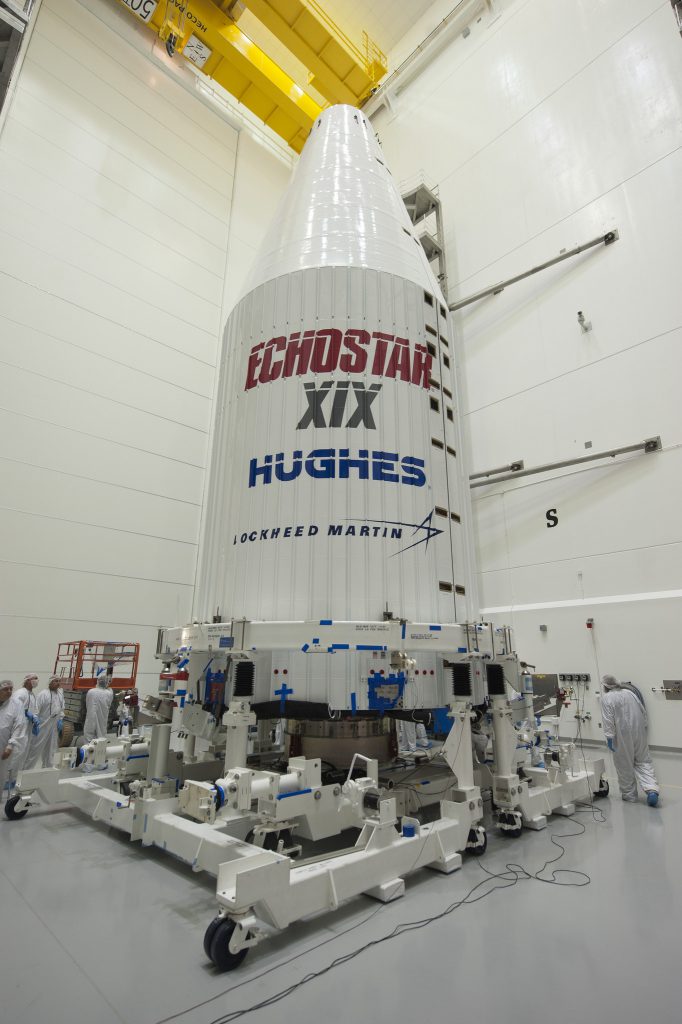
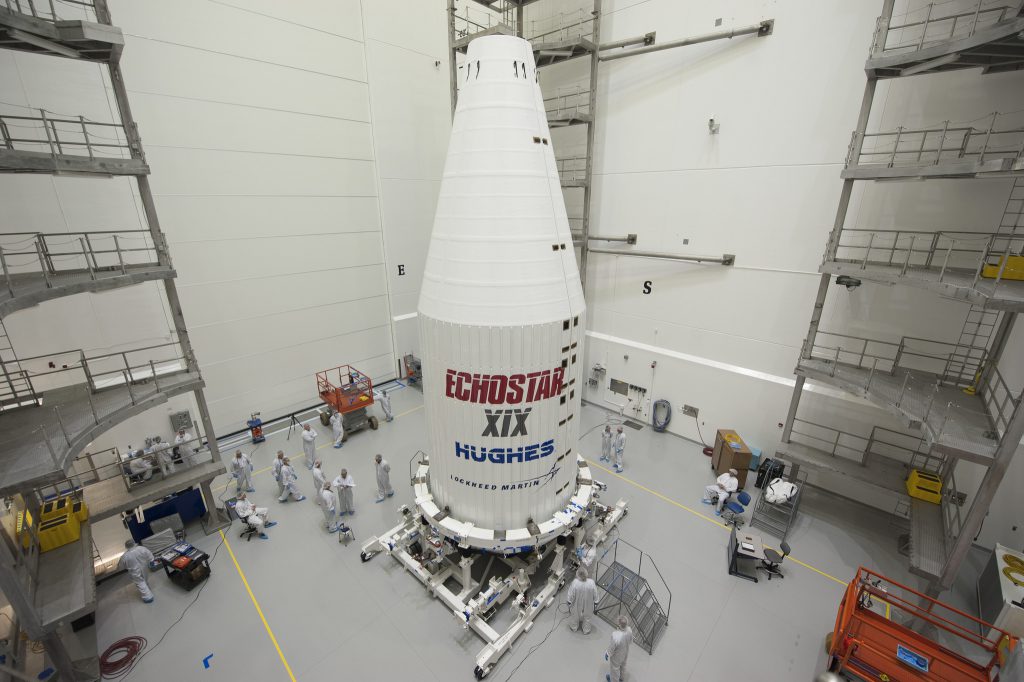
Satellite mounted atop rocket
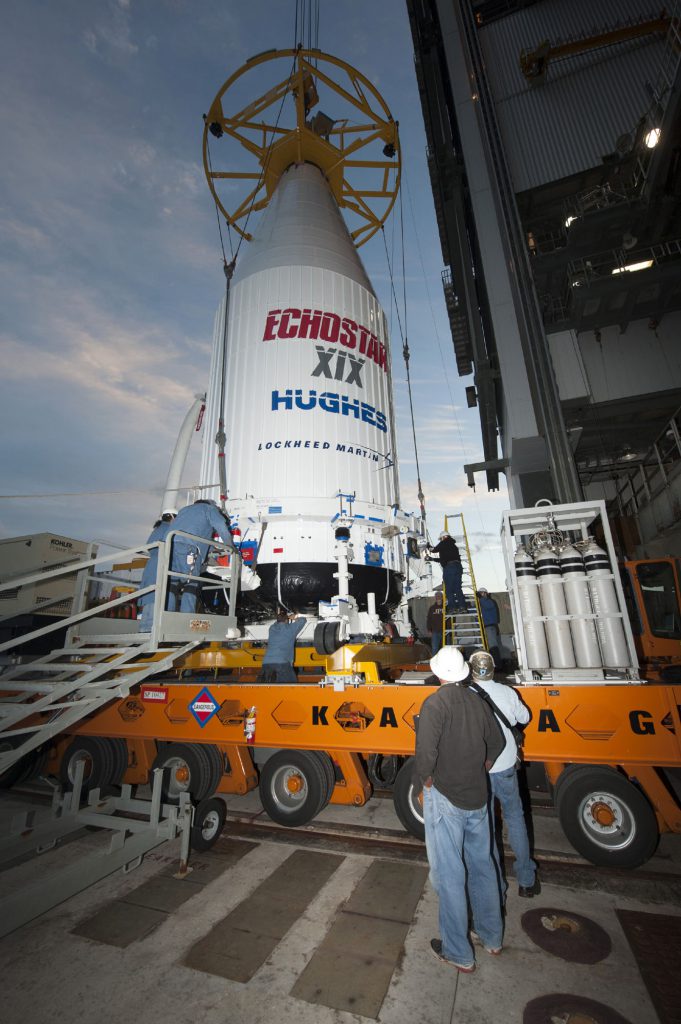
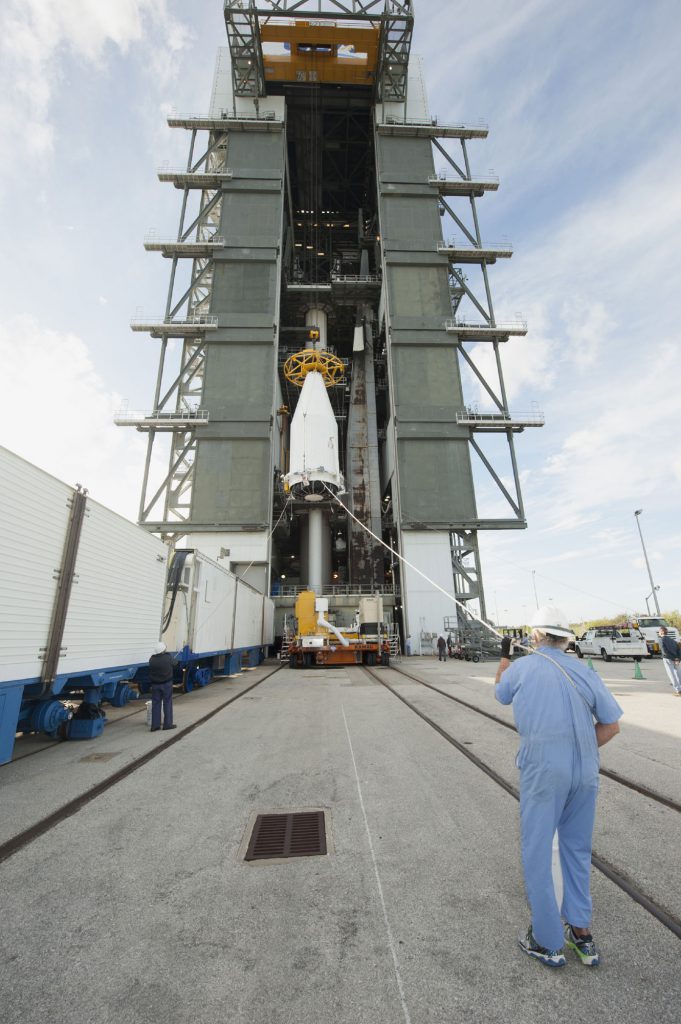
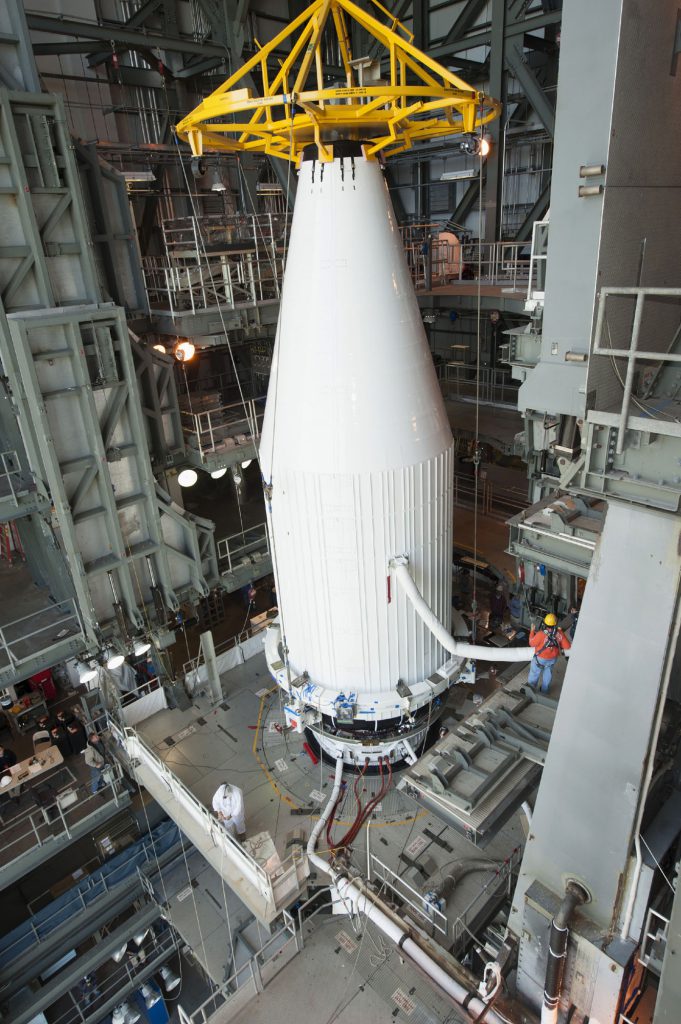
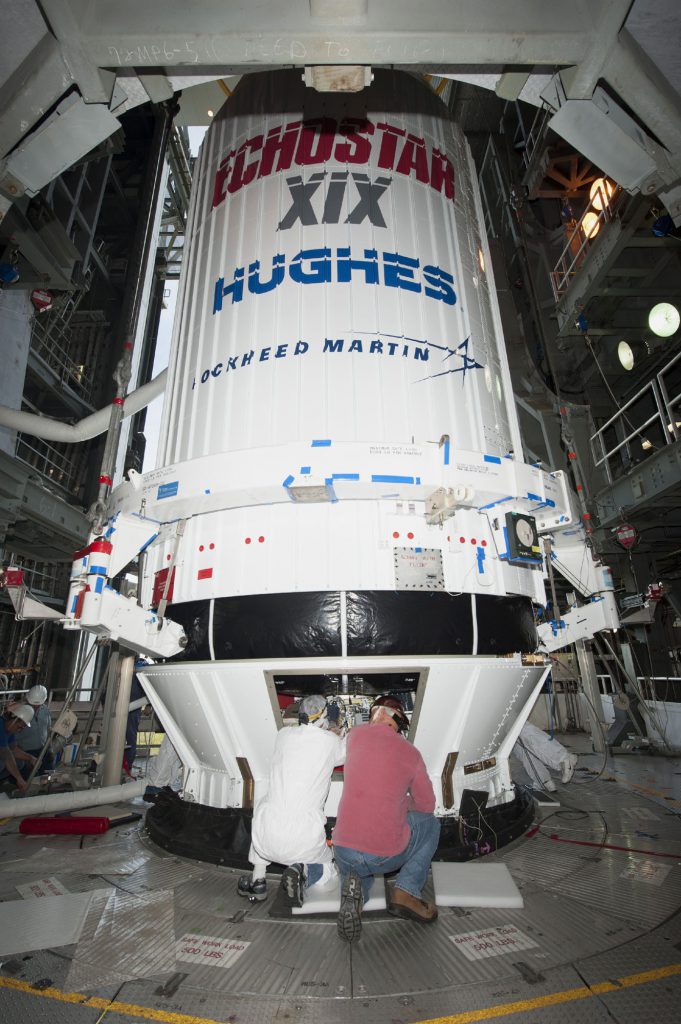
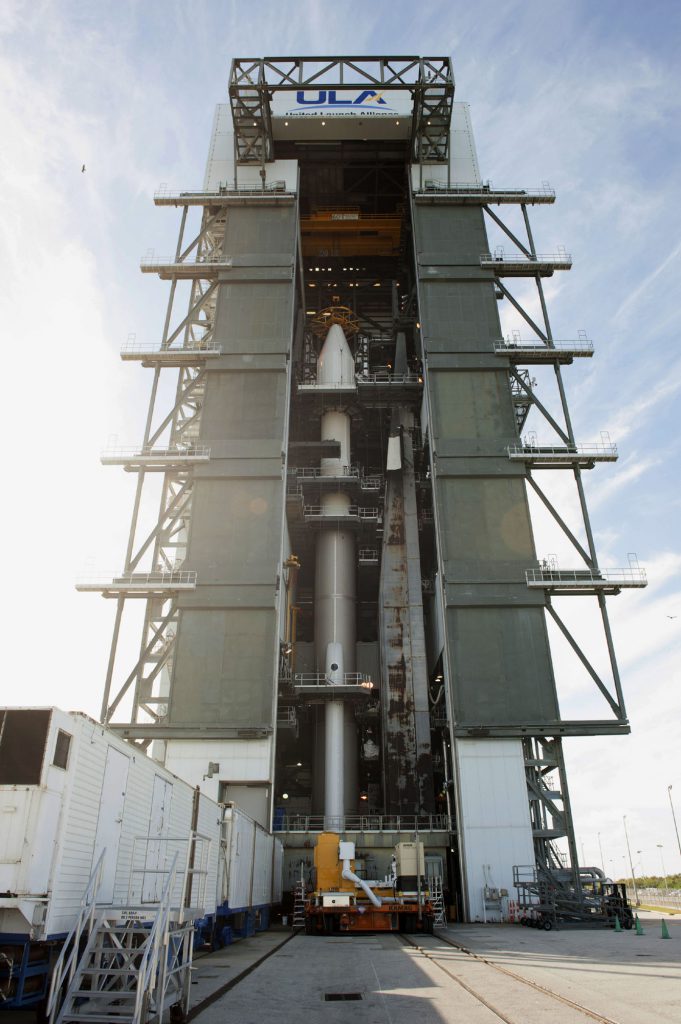
Go Atlas! Go Centaur! Go EchoStar XIX!
Last edited:


